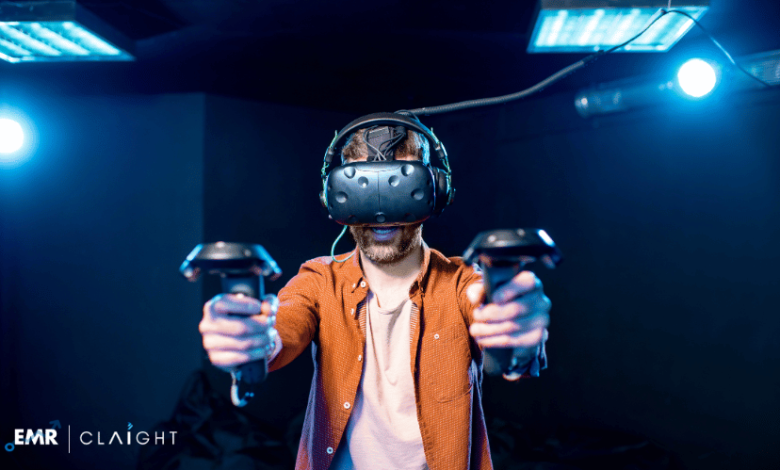Gaming Simulation Market Size, Share, Growth, Analysis Forecast 2024-2032
Global Gaming Simulation Market Set to Surge from USD 7.35 Billion in 2023 to USD 25.36 Billion by 2032, Growing at a CAGR of 14.8%

Global Gaming Simulation Market Outlook
The global gaming simulation market is experiencing dynamic growth, driven by technological advancements, increasing consumer interest, and the expanding applications of simulation technology. Gaming simulations, which encompass a broad range of interactive experiences—from realistic flight simulators to immersive virtual reality games—are transforming the way users engage with digital content. According to Expert Market Research, the market for gaming simulation is on a robust upward trajectory, with projections indicating continued expansion in the coming years. This article explores the current landscape, key drivers, market trends, and future outlook of the global gaming simulation market.
Market Overview
Gaming simulation refers to the use of interactive and immersive technologies to replicate real-world scenarios or create entirely new virtual environments. This market includes various segments such as flight simulators, driving simulators, virtual reality (VR) games, and other interactive entertainment platforms. The sector caters to diverse audiences, including gaming enthusiasts, professional training institutions, and entertainment companies.
Get a Free Sample Report with Table of Contents@ https://www.expertmarketresearch.com/reports/gaming-simulation-market/requestsample
Gaming Simulation Market Size and Growth
The global gaming simulation market has witnessed significant growth in recent years, reflecting a surge in consumer interest and technological innovation. The market size has expanded considerably, fueled by advancements in simulation technology and the increasing popularity of interactive gaming experiences. The market is expected to continue growing at a substantial rate, supported by rising investments, technological advancements, and expanding applications of gaming simulations.
Key Drivers of Market Growth
- Technological Advancements: The evolution of gaming simulation technology is a primary driver of market growth. Innovations such as high-definition graphics, VR and augmented reality (AR) integration, and advanced motion sensing are enhancing the realism and immersive quality of gaming simulations. These technological advancements are attracting a growing number of users and driving demand for sophisticated simulation experiences.
- Increasing Consumer Demand: The demand for interactive and immersive gaming experiences is on the rise. Consumers are increasingly seeking more realistic and engaging simulations, whether for entertainment, training, or educational purposes. The proliferation of high-performance gaming consoles, PCs, and VR headsets is contributing to this growing demand.
- Expanding Applications of Simulation Technology: Gaming simulations are no longer limited to entertainment. They are increasingly used in professional training, education, and research. For instance, flight simulators and driving simulators are employed for pilot and driver training, while VR simulations are used for medical and military training. This expansion of applications is driving market growth across various sectors.
- Growth of the Gaming Industry: The overall growth of the gaming industry, including both casual and professional gaming, is a significant factor influencing the gaming simulation market. The increasing popularity of esports, online gaming, and mobile gaming is driving demand for advanced simulation technologies that enhance the gaming experience.
- Investment and Innovation: The gaming simulation market is attracting substantial investment from both established companies and startups. Investments in research and development, along with innovation in simulation technology, are contributing to market growth. Companies are focusing on developing new and improved simulation platforms to meet the evolving needs of users.
Read Full Report with Table of Contents@ https://www.expertmarketresearch.com/reports/gaming-simulation-market
Gaming Simulation Market Trends
- Rise of Virtual Reality (VR) and Augmented Reality (AR): VR and AR technologies are revolutionizing the gaming simulation market. VR provides immersive experiences by creating a fully virtual environment, while AR enhances the real world with digital elements. Both technologies are gaining traction in gaming simulations, offering users highly engaging and interactive experiences.
- Growth of Mobile Gaming Simulations: The proliferation of smartphones and tablets has led to the rise of mobile gaming simulations. Mobile devices equipped with powerful processors and high-resolution displays are enabling sophisticated simulation experiences on-the-go. The growth of mobile gaming is expanding the reach of gaming simulations to a broader audience.
- Integration of Artificial Intelligence (AI): AI is being integrated into gaming simulations to enhance realism and interactivity. AI algorithms are used to create adaptive and responsive environments, enabling simulations to adjust based on user actions and preferences. This integration is improving the overall quality and immersion of gaming simulations.
- Emergence of Cloud Gaming: Cloud gaming is an emerging trend that allows users to stream games and simulations directly from the cloud, eliminating the need for high-performance hardware. This technology is making gaming simulations more accessible and convenient, further driving market growth.
- Focus on Realistic Simulation Experiences: There is a growing emphasis on creating highly realistic simulation experiences. Advances in graphics, physics engines, and motion capture technologies are contributing to the development of simulations that closely replicate real-world scenarios. This focus on realism is attracting users who seek authentic and immersive experiences.
Regional Analysis
- North America: North America is a leading market for gaming simulations, driven by a strong gaming culture, technological advancements, and high consumer spending. The presence of major gaming companies and innovation hubs in the region contributes to its dominance in the market.
- Europe: Europe is experiencing steady growth in the gaming simulation market, supported by a growing interest in VR and AR technologies. The region’s focus on innovation and technological advancements is driving market expansion.
- Asia-Pacific: The Asia-Pacific region is witnessing rapid growth in the gaming simulation market, driven by the increasing adoption of mobile gaming, rising disposable incomes, and the expansion of the gaming industry. Countries like China, Japan, and South Korea are key contributors to the market’s growth.
- Latin America: Latin America is emerging as a promising market for gaming simulations, with increasing consumer interest and expanding digital infrastructure. The region’s growing gaming community and investment in technology are supporting market growth.
- Middle East and Africa: The Middle East and Africa are experiencing gradual growth in the gaming simulation market. Increasing digital adoption and investments in entertainment technology are driving market expansion in this region.
Challenges and Opportunities
Challenges:
- High Development Costs: Developing advanced gaming simulations involves significant investment in technology and resources. High development costs can be a barrier for smaller companies and startups entering the market.
- Technical Complexity: The complexity of creating realistic and immersive simulations can pose challenges for developers. Ensuring compatibility across different platforms and maintaining high performance levels require specialized expertise.
- Regulatory Issues: Regulatory challenges related to data privacy, content moderation, and digital rights management can impact the development and distribution of gaming simulations.
Opportunities:
- Innovation in Simulation Technologies: Opportunities exist in exploring new technologies such as AI, machine learning, and advanced graphics engines to enhance the quality and realism of gaming simulations. Innovation can lead to the development of unique and engaging simulation experiences.
- Expansion into Emerging Markets: Emerging markets offer significant growth potential for gaming simulations. Increasing digital infrastructure and rising disposable incomes in these regions present opportunities for market expansion.
- Partnerships and Collaborations: Collaborations between technology companies, game developers, and content creators can lead to the development of innovative simulation platforms and new market opportunities. Strategic partnerships can enhance product offerings and reach new audiences.
Gaming Simulation Market Future Outlook
The global gaming simulation market is set for continued growth, driven by technological advancements, increasing consumer demand, and the expanding applications of simulation technology. As VR, AR, and AI technologies evolve, they will further enhance the realism and interactivity of gaming simulations, creating new opportunities for developers and users alike.
The market is likely to witness increased investment in research and development, leading to the introduction of advanced simulation platforms and innovative gaming experiences. The expansion of mobile gaming, cloud gaming, and immersive technologies will contribute to the market’s growth, making gaming simulations more accessible and engaging for a global audience.
Read More Reports:
Blowout Preventer Market: https://www.expertmarketresearch.com/reports/blowout-preventer-market
Vegetable Concentrates Market: https://www.expertmarketresearch.com/reports/vegetable-concentrates-market
Small Boats Market: https://www.expertmarketresearch.com/reports/small-boats-market
Media Contact:
Company Name: Claight Corporation
Email: sales@expertmarketresearch.com
Toll Free Number: +1-415-325-5166 | +44-702-402-5790
Address: 30 North Gould Street, Sheridan, WY 82801, USA
Website: www.expertmarketresearch.com
Aus Site: https://www.expertmarketresearch.com.au/



